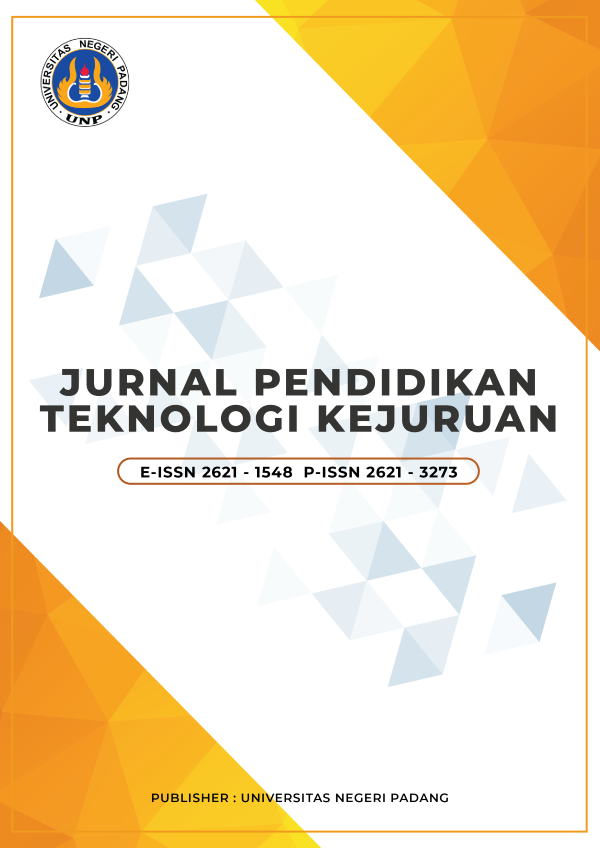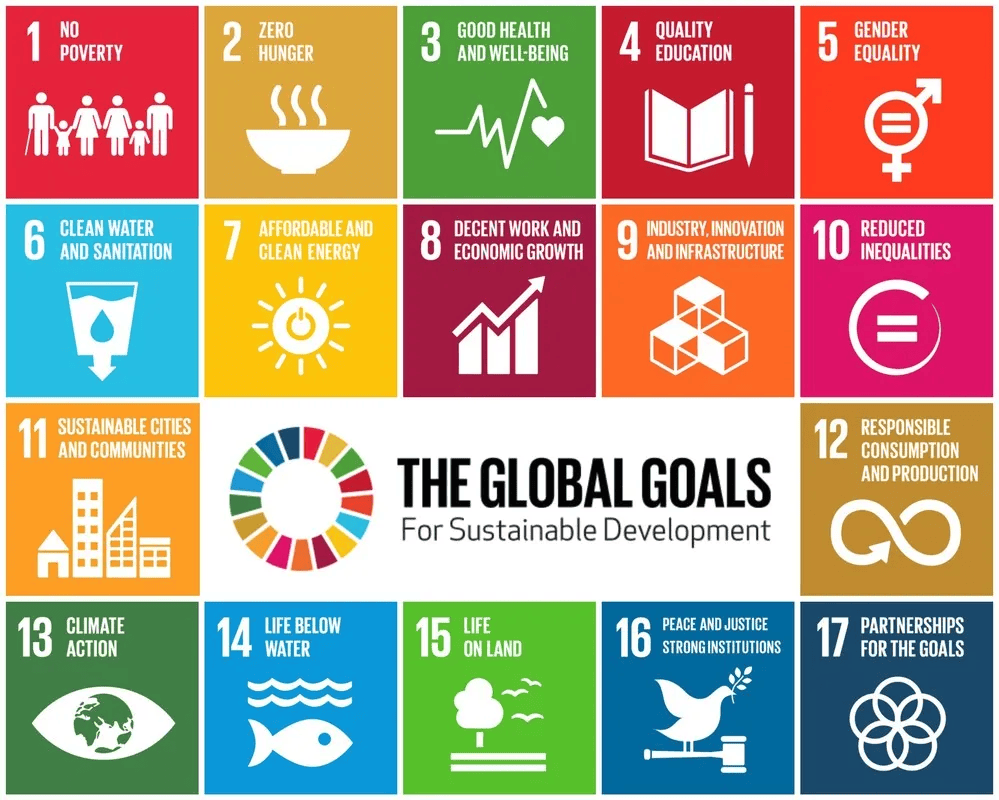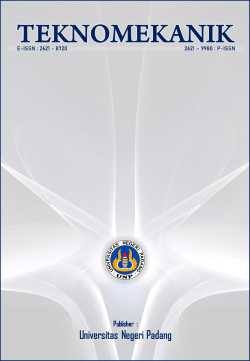Revolutionizing polymethyl methacrylate toughness: Achieving 190% improvement with nanocellulose reinforcement while maintaining optical clarity
DOI:
https://doi.org/10.24036/jptk.v7i4.39823Keywords:
PMMA, Cellulose, Toughness, CNC, TransparencyAbstract
Polymethyl methacrylate (PMMA) is widely used in applications requiring high transparency and durability, such as optical lenses and protective coatings. However, its inherent brittleness limits its application in high-impact environments. This study investigates the incorporation of cellulose nanocrystals (CNCs) into PMMA to significantly enhance its toughness without compromising its optical clarity. By reinforcing PMMA with CNCs, the nanocomposites exhibited a remarkable 190% increase in toughness while maintaining 90% optical transparency. The innovation lies in achieving a balance between toughness and transparency through controlled CNC dispersion within the PMMA matrix, which minimizes excessive bonding that could lead to brittleness. Proper CNC dispersion was achieved through in-situ polymerization, allowing the nanocrystals to interact with the polymer matrix through van der Waals forces rather than covalent bonds. This approach reduces stress concentration and mitigates the formation of defects in the polymer matrix, ultimately leading to a tougher, more flexible material. In addition to enhancing mechanical properties, this study underscores the importance of controlling CNC content to preserve the intrinsic optical transparency of PMMA. These findings open new possibilities for CNC-reinforced PMMA in advanced applications that demand high mechanical performance coupled with excellent optical properties, extending its use in fields such as medical devices, protective coatings, and transparent structural materials.
Downloads
References
Akbar, I. M., Fauza, A. N., Abadi, Z., & Rahmadiawan, D. (2024). Study of the effective fraction of areca nut husk fibre composites based on mechanical properties. Journal of Engineering Researcher and Lecturer, 3(1), 19–34. https://doi.org/10.58712/jerel.v3i1.126
Ali Sabri, B., Satgunam, M., Abreeza, N., & N. Abed, A. (2021). A review on enhancements of PMMA Denture Base Material with Different Nano-Fillers. Cogent Engineering, 8(1). https://doi.org/10.1080/23311916.2021.1875968
Ash, B. J., Siegel, R. W., & Schadler, L. S. (2004). Mechanical Behavior of Alumina/Poly(methyl methacrylate) Nanocomposites. Macromolecules, 37(4). https://doi.org/10.1021/ma0354400
Ash, B. J., Stone, J., Rogers, D. F., Schadler, L. S., Siegel, R. W., Benicewicz, B. C., & Apple, T. (2001). Investigation into the thermal and mechanical behavior of PMMA/alumina nanocomposites. Materials Research Society Symposium - Proceedings, 661. https://doi.org/10.1557/proc-661-kk2.10
Fauza, A. N., Qalbina, F., Nurdin, H., Ambiyar, & Refdinal. (2023). The influence of processing temperature on the mechanical properties of recycled PET fibers. Teknomekanik, 6(1). https://doi.org/10.24036/teknomekanik.v6i1.21472
Fujisawa, S., Saito, T., Kimura, S., Iwata, T., & Isogai, A. (2014). Comparison of mechanical reinforcement effects of surface-modified cellulose nanofibrils and carbon nanotubes in PLLA composites. Composites Science and Technology, 90. https://doi.org/10.1016/j.compscitech.2013.10.021
Heux, L., Chauve, G., & Bonini, C. (2000). Nonflocculating and chiral-nematic self-ordering of cellulose microcrystals suspensions in nonpolar solvents. Langmuir, 16(21). https://doi.org/10.1021/la9913957
Iwamoto, S., Kai, W., Isogai, A., & Iwata, T. (2009). Elastic modulus of single cellulose microfibrils from tunicate measured by atomic force microscopy. Biomacromolecules, 10(9). https://doi.org/10.1021/bm900520n
Kausch, H. H., & Michler, G. H. (2007). Effect of nanoparticle size and size-distribution on mechanical behavior of filled amorphous thermoplastic polymers. Journal of Applied Polymer Science, 105(5). https://doi.org/10.1002/app.26570
Makruf, Z. I., Afnison, W., & Rahim, B. (2024). A Study on the utilization of areca nut husk fiber as a natural fibre reinforcement in composite applications: A systematic literature review. Journal of Engineering Researcher and Lecturer, 3(1), 18–28. https://doi.org/10.58712/jerel.v3i1.123
Mariano, M., El Kissi, N., & Dufresne, A. (2014). Cellulose nanocrystals and related nanocomposites: Review of some properties and challenges. In Journal of Polymer Science, Part B: Polymer Physics (Vol. 52, Issue 12). https://doi.org/10.1002/polb.23490
Mbarek, I. A., Matadi Boumbimba, R., Rusinek, A., Voyiadjis, G. Z., Gerard, P., & Samadi-Dooki, A. (2018). The dynamic behavior of poly (methyl methacrylate) based nano-rubbers subjected to impact and perforation: Experimental investigations. Mechanics of Materials, 122, 9–25. https://doi.org/10.1016/j.mechmat.2018.03.011
Nurdin, H., Waskito, W., Fauza, A. N., Siregar, B. M., & Kenzhaliyev, B. K. (2023). The investigation of physical dan mechanical properties of Nipah-based particle board. Teknomekanik, 6(2), 94–102. https://doi.org/10.24036/teknomekanik.v6i2.25972
Oksman, K., Mathew, A. P., Bondeson, D., & Kvien, I. (2006). Manufacturing process of cellulose whiskers/polylactic acid nanocomposites. Composites Science and Technology, 66(15). https://doi.org/10.1016/j.compscitech.2006.03.002
Oktaviani, A., Zulfia, A., & Rahmadiawan, D. (2023). Enhancing laminate composites: Investigating the impact of kevlar layering and titanium carbide nanoparticles. Teknomekanik, 6(2), 82–93. https://doi.org/10.24036/teknomekanik.v6i2.26572
Shi, S. C., Lin, C. F., Liu, C. F., & Chen, T. H. (2022). Tribological and mechanical properties of cellulose/PMMA composite. Polymers and Polymer Composites, 30. https://doi.org/10.1177/09673911221140935
Shi, S.-C., Cheng, S.-T., & Rahmadiawan, D. (2024). Developing biomimetic PVA/PAA hydrogels with cellulose nanocrystals inspired by tree frog structures for superior wearable sensor functionality. Sensors and Actuators A: Physical, 379, 115981. https://doi.org/10.1016/j.sna.2024.115981
Shi, S.-C., Hsieh, C.-F., & Rahmadiawan, D. (2024). Enhancing mechanical properties of polylactic acid through the incorporation of cellulose nanocrystals for engineering plastic applications. Teknomekanik, 7(1), 20–28. https://doi.org/10.24036/teknomekanik.v7i1.30072
Shi, S.-C., & Liu, G.-T. (2021). Cellulose nanocrystal extraction from rice straw using a chlorine-free bleaching process. Cellulose, 28(10), 6147–6158. https://doi.org/10.1007/s10570-021-03889-5
Downloads
Published
How to Cite
Issue
Section
License
Copyright (c) 2024 Guan-Ting Liu, Shih-Chen Shi, Dieter Rahmadiawan

This work is licensed under a Creative Commons Attribution 4.0 International License.





